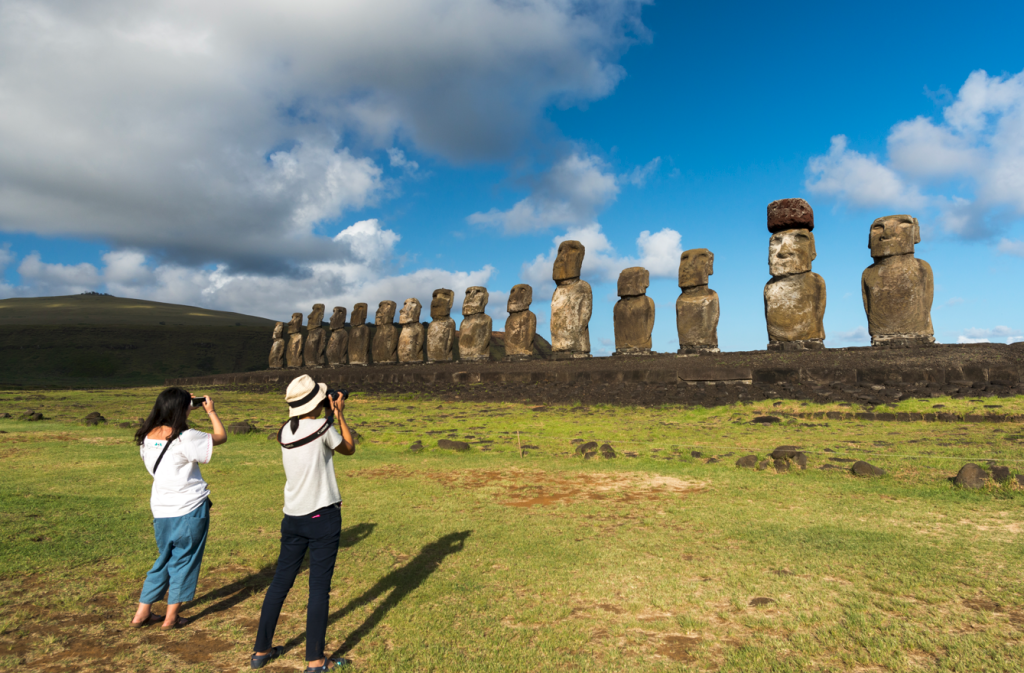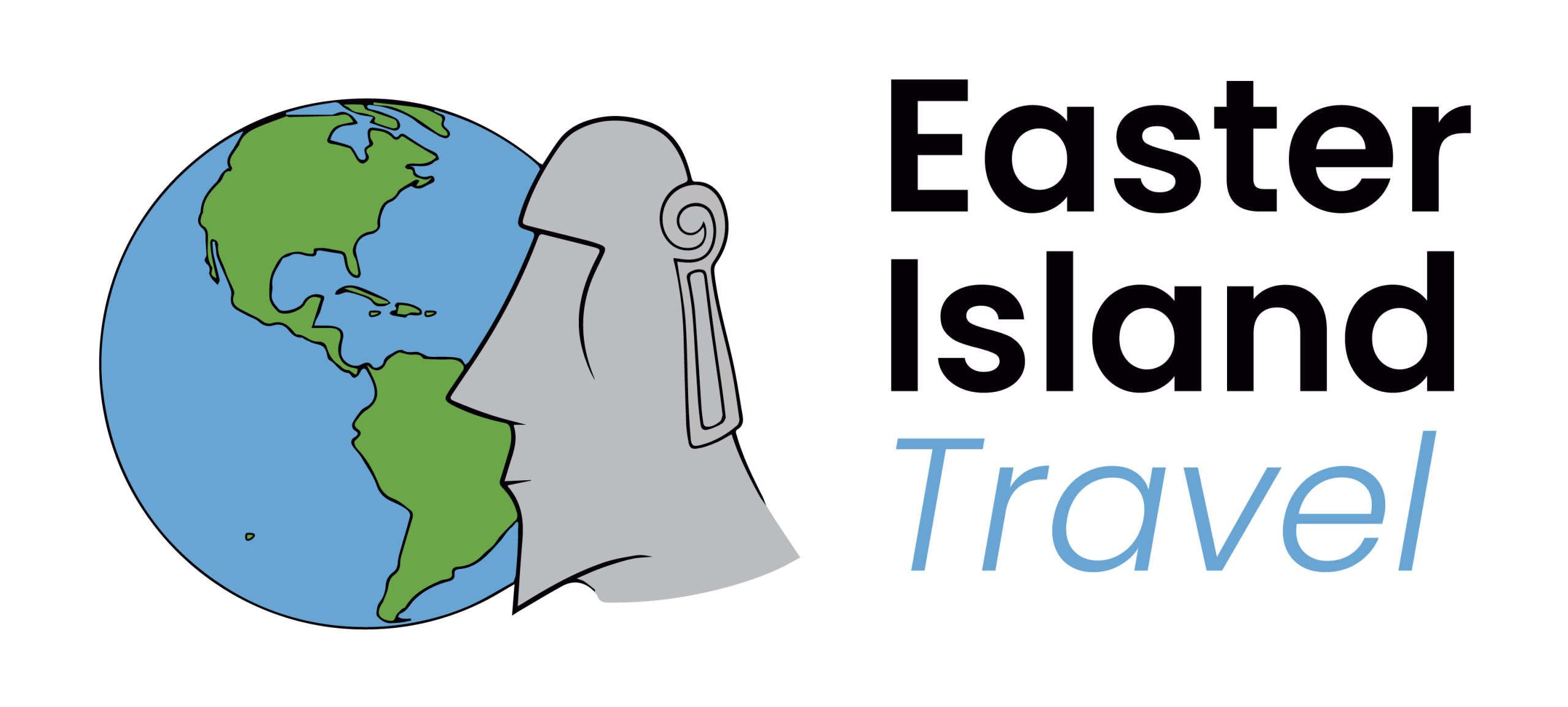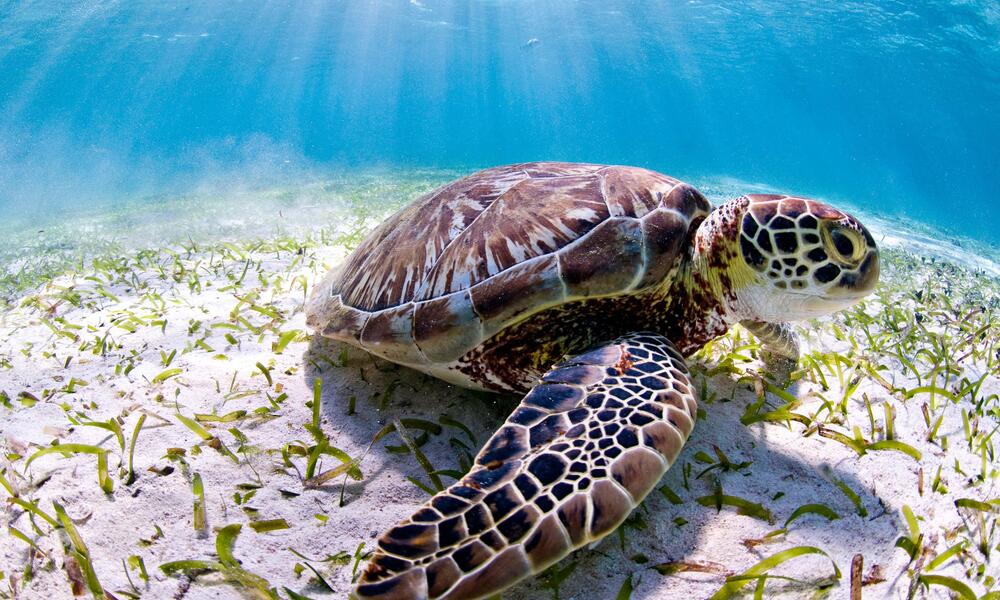Every June 16th, we celebrate World Sea Turtle Day — a key date to raise awareness about the decline of these remarkable creatures and to highlight their crucial role in maintaining healthy marine ecosystems. At Easter Island Travel, a tour company deeply committed to responsible tourism in Rapa Nui, we want to honor these ancient animals and share how you can help protect them during your visit to Easter Island.
Ancient guardians of the ocean
Sea turtles have been swimming in our oceans for over 100 million years. Throughout history, they have survived drastic climate shifts and major changes on our planet, playing an essential part in ocean health: they help control jellyfish populations, keep seagrass beds thriving, and transport vital nutrients that enrich coastal ecosystems.
Today, seven species of sea turtles exist worldwide, five of which can be found in the Pacific Ocean — and some even grace the waters surrounding Easter Island.
Get to know some of these fascinating species

Hawksbill Turtle (Eretmochelys imbricata): a living treasure of Easter Island
The hawksbill turtle is one of the most iconic marine species in Rapa Nui. Its beautiful amber shell with intricate patterns made it highly sought after for decorative items, pushing it to the brink of extinction. Classified as critically endangered, the hawksbill can still be spotted gliding gracefully in the clear, warm waters near Hanga Roa and local coves — a true natural gem that reminds us why conservation is so vital.
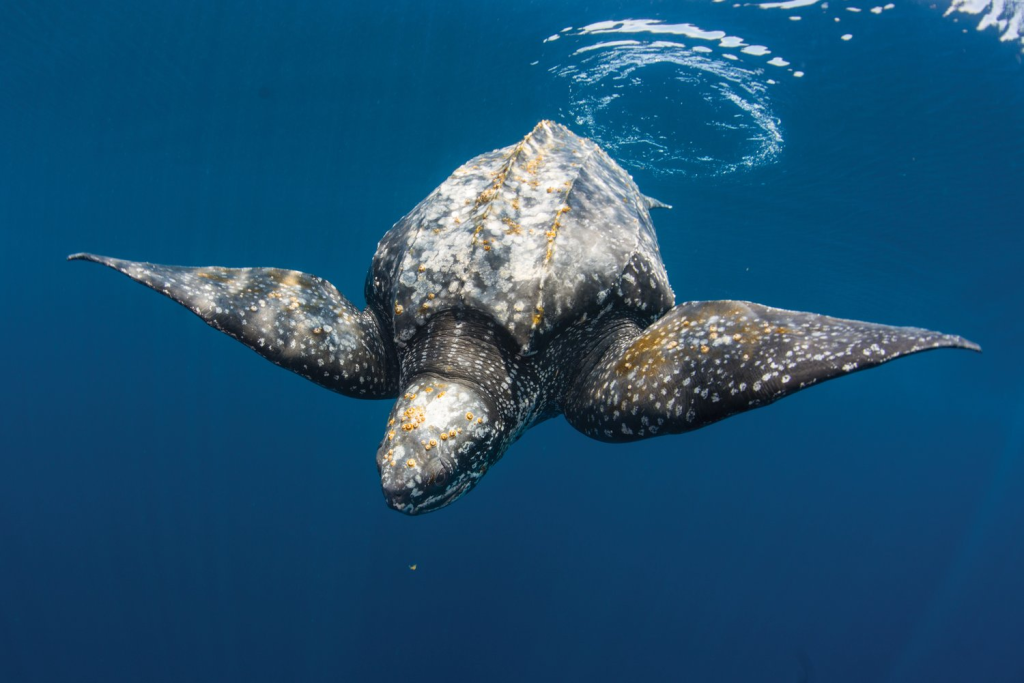
Leatherback Turtle (Dermochelys coriacea)
The largest of all sea turtles, the leatherback can grow over two meters long and weigh more than 500 kilograms. Unlike other turtles, its shell is flexible and leather-like rather than hard. It feeds mainly on jellyfish but faces severe threats from bycatch and plastic pollution in the ocean.
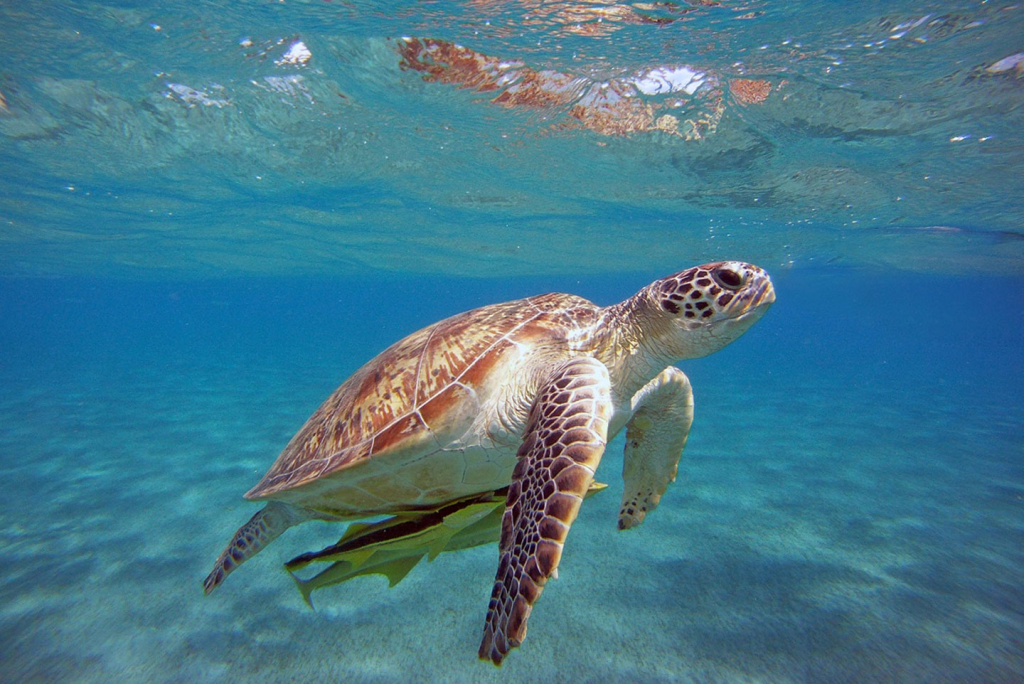
Loggerhead Turtle (Caretta caretta)
Easily recognized by its large head and strong jaws, the loggerhead crushes crabs, mollusks, and other hard-shelled prey. Sadly, this species is threatened by accidental capture in fishing nets, habitat loss, and illegal egg collection.

Olive Ridley Turtle (Lepidochelys olivacea)
Smaller in size with an olive-green hue, the Olive Ridley is famous for its arribadas — spectacular mass nesting events where thousands of females come ashore together to lay eggs. This species is vulnerable due to nest destruction and unregulated fishing.

Green Turtle (Chelonia mydas)
Primarily herbivorous, the green turtle feeds on algae and seagrass, playing an important role in maintaining healthy reef and coastal ecosystems. Though some populations are slowly recovering thanks to conservation efforts, it remains a vulnerable species worldwide.
Responsible tourism: our commitment
At Easter Island Travel, we believe that tourism should be a force for good — a way to appreciate and protect nature rather than harm it. That’s why we offer authentic, mindful experiences that respect the marine life and unique environment of Rapa Nui.
How you can help as a visitor
- Do not touch, chase, or feed sea turtles.
- Never leave litter on beaches, trails, or natural sites.
- Avoid collecting corals, shells, or any pieces of the ecosystem.
- Choose local operators and businesses that follow eco-friendly practices.
- Learn and share information about protecting Easter Island’s fragile environment.
Turtles, culture, and legacy
Visiting Easter Island is not only a journey through its unique culture and ancient moai statues; it’s also a chance to connect with its extraordinary marine life and help preserve a fragile natural heritage. Sea turtles — symbols of wisdom and resilience — remind us of the importance of traveling with care and respect.
At Easter Island Travel, we invite you to discover Rapa Nui with fresh eyes: enjoy its beauty and help protect it for generations to come.
